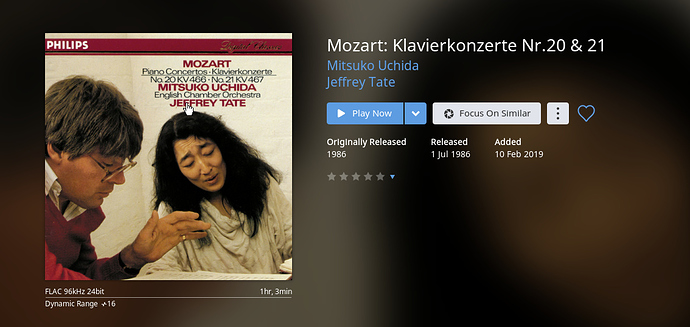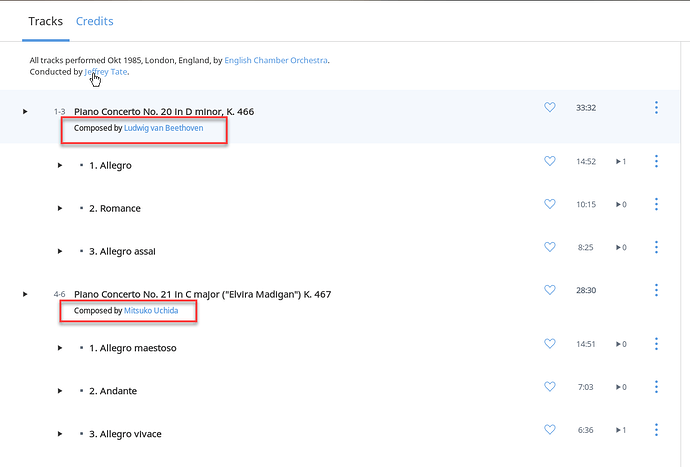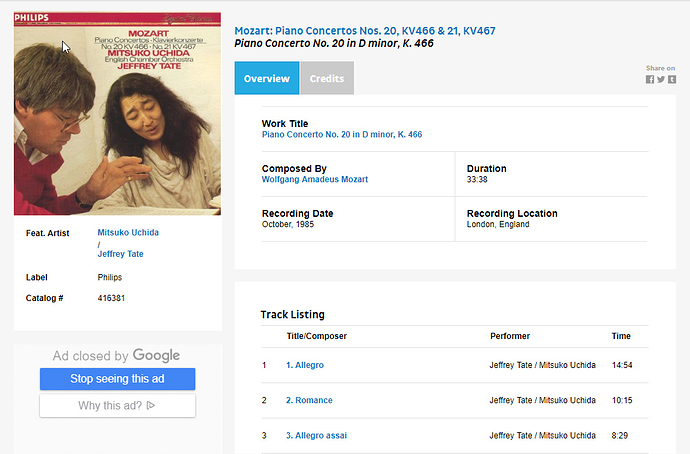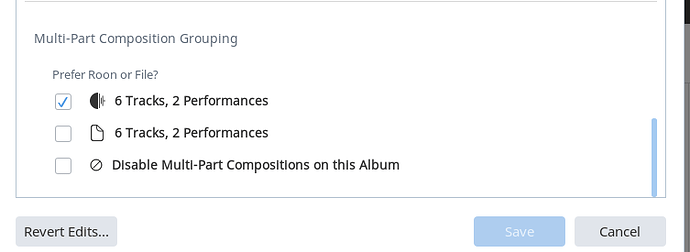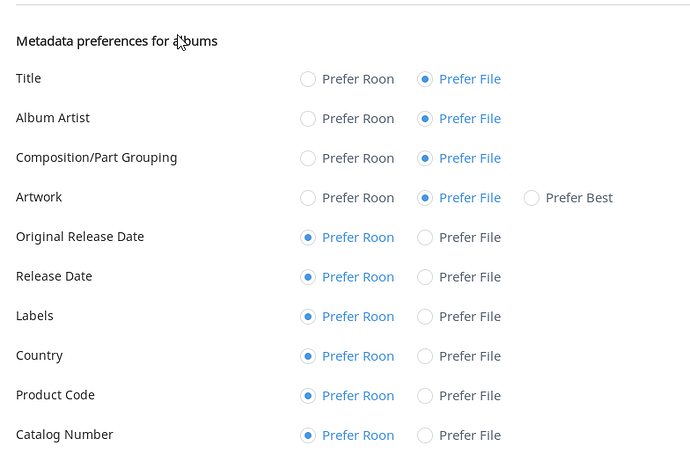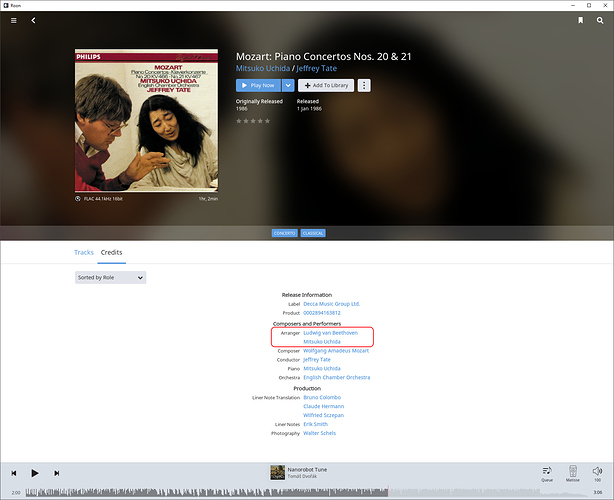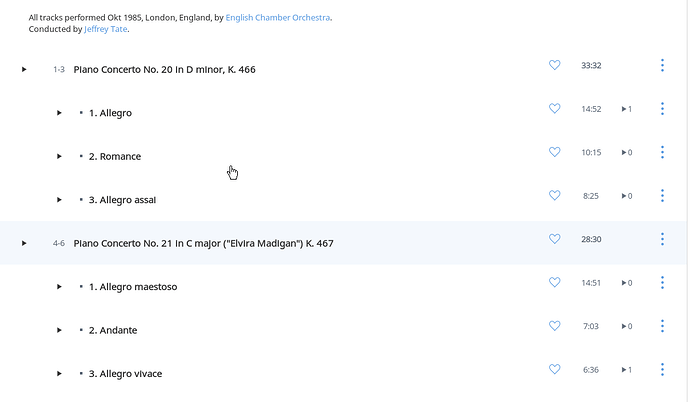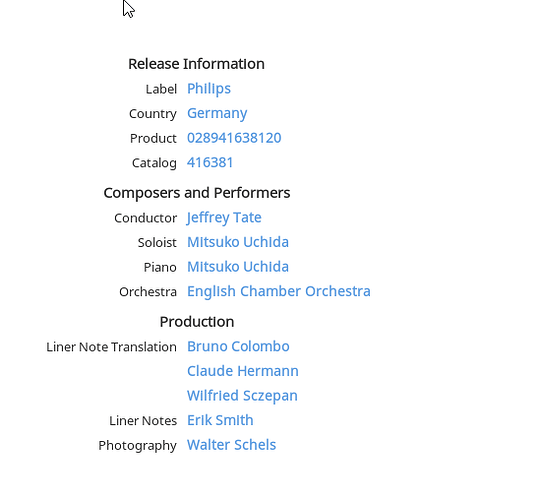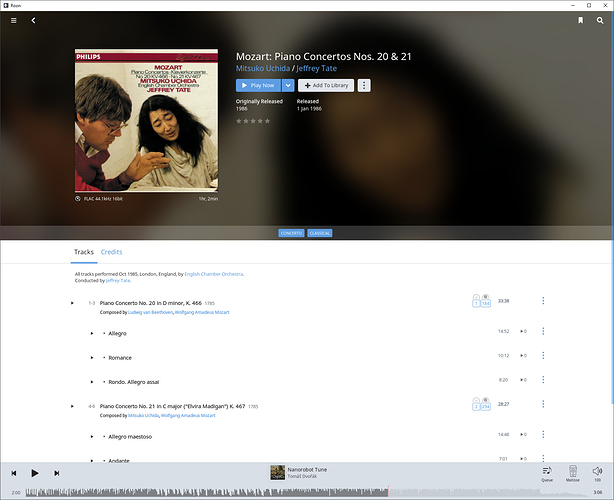This is not a one to one correspondence with the roon “credit role” model but I find that most of the problems I have with Classical music role handling are with the following general categories of role.
- Composer
- Vocal Ensemble
- Vocal Ensemble Conductor
Composer
So, if we take “Composer”, for example, then orchestrator, arranger, lyricist, writer are all considered in the roon model as composer roles. But orchestration and transcription are production roles and cadenza is a performer role.
This leads to all sorts of side effects as composer, production and performer roles are all treated differently. So, for example. Richard Wagner will be duplicated on the composer line when both a composer and lyricst credit has come through in meta-data. This is technically correct in terms of data modelling, but it just looks really odd and it creates a Hobson’s choice to remove the lyricist credit if the aesthetics of roon is important to you. As an aside, I rather suspect that many with a strong aural aesthetic have an equally strong visual aesthetic and these things can become surprisingly important and is at the root of recent push back on the UI.
Another side effect. My experience is that it is very common for the label/meta data supplier to assign an orchestration, transcription or cadenza role to “arranger”. But I know by trial and error if I make that correction then roon will not display the role on the composer line. So the best of a bad job is that I leave it as is. Worse, I will often change a cadenza role if it has come through in meta-data to “arranger” so it appears on the composer line. Sometimes there will be a tag-line on the album art along the lines of “cadenza by . . .” so the information is not completely lost (unless of course the album cover has been over-written by a “better” one).
What would be nice if there was an option on the composer line if you like the detail (I know many do not) which broke out the composer roles on the same line, aka:
Composer: Richard Wagner; Lyricist: Richard Wagner; Arranger: Felix the Cat; Transcription: Fido the Dog
Vocal Ensemble
There are almost identical issues with “Vocal Ensembles”. Choir and chorus is a performer, but vocal ensemble is an ensemble. They are not categorised very consistently in meta-data but only an ensemble will be displayed on the orchestra line. So with acappella music the primary artist is often completely missing from the main album page and hidden in the credits unless it has an ensemble credit. With more complex opera, requiem, oratorio etc. I personally prefer to see choirs/chorus etc. listed on the same line against the orchestra as arguably they are the most important primary artist along with the key soloists. Either way this is an edit I would prefer not to make but it is often necessary as it can be hit and miss how the vocal ensemble is categorised in meta-data and of course roon will treat them differently accordingly.
Vocal Ensemble Conductor
It gets quite complicated in this category. A choir master, choir director and choir conductor are all conductors in the roon model. But a chorus master is a performer and a children’s choirmaster is production. One of the most common roles I see is “chorus director” but that doesn’t seem to be assigned in the roon model.
Again, I don’t see any evidence in meta-data, for example, that “master” is consistently a conductor and “director” is consistently an admin role. The meta-data suppliers and labels will use the terms quite interchangeably.
There are going to be quite a few use cases whether the vocal conductor is on stage or not and is a conductor in that sense. The first distinction is, is this a live or recorded work? So, I would have thought (maybe I am wrong) that with a recorded work the vocal conductor is doing just that in the studio. With a live work there is going to be a lot of variation. In acappella works these vocal conductor roles will always be on the stage. In many cases where there is a small instrumental ensemble accompaniment the vocal conductor or the lead violin will assume this role. The chorus director for a big Verdi opera is not going to be onstage getting in the way but he will usually have equal billing with the orchestra conductor in the pit so I would like to see him on the main album display page. Then you have something like Mahler’s “Symphony of a Thousand” or the Bernstein’s Berlin Wall Beethoven 9th with 4 orchestras and 7 choirs. I don’t know how many conductors were there that night. I rather suspect that too many conductors spoil the soup and Bernstein was more than up to the job. But the convention would be to see that all the conductors, orchestras and choirs prominently on the disk and I would expect to see them also on an electronic player. Again, one idea is just to break out the different credit roles on the same orchestra, composer and conductor display lines as there are now for those who would like it.
